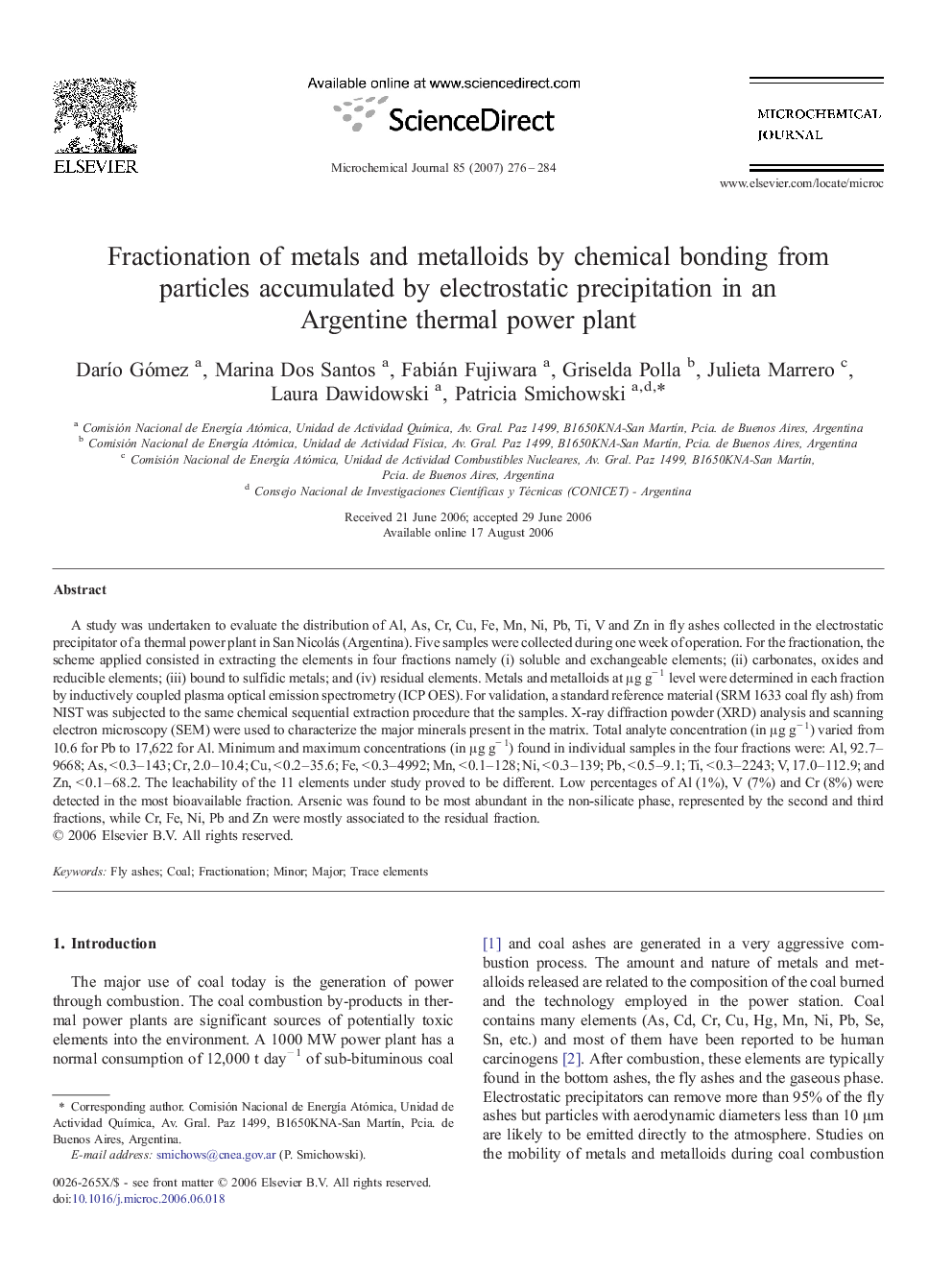| Article ID | Journal | Published Year | Pages | File Type |
|---|---|---|---|---|
| 1228459 | Microchemical Journal | 2007 | 9 Pages |
A study was undertaken to evaluate the distribution of Al, As, Cr, Cu, Fe, Mn, Ni, Pb, Ti, V and Zn in fly ashes collected in the electrostatic precipitator of a thermal power plant in San Nicolás (Argentina). Five samples were collected during one week of operation. For the fractionation, the scheme applied consisted in extracting the elements in four fractions namely (i) soluble and exchangeable elements; (ii) carbonates, oxides and reducible elements; (iii) bound to sulfidic metals; and (iv) residual elements. Metals and metalloids at μg g− 1 level were determined in each fraction by inductively coupled plasma optical emission spectrometry (ICP OES). For validation, a standard reference material (SRM 1633 coal fly ash) from NIST was subjected to the same chemical sequential extraction procedure that the samples. X-ray diffraction powder (XRD) analysis and scanning electron microscopy (SEM) were used to characterize the major minerals present in the matrix. Total analyte concentration (in μg g− 1) varied from 10.6 for Pb to 17,622 for Al. Minimum and maximum concentrations (in μg g− 1) found in individual samples in the four fractions were: Al, 92.7–9668; As, < 0.3–143; Cr, 2.0–10.4; Cu, < 0.2–35.6; Fe, < 0.3–4992; Mn, < 0.1–128; Ni, < 0.3–139; Pb, < 0.5–9.1; Ti, < 0.3–2243; V, 17.0–112.9; and Zn, < 0.1–68.2. The leachability of the 11 elements under study proved to be different. Low percentages of Al (1%), V (7%) and Cr (8%) were detected in the most bioavailable fraction. Arsenic was found to be most abundant in the non-silicate phase, represented by the second and third fractions, while Cr, Fe, Ni, Pb and Zn were mostly associated to the residual fraction.
